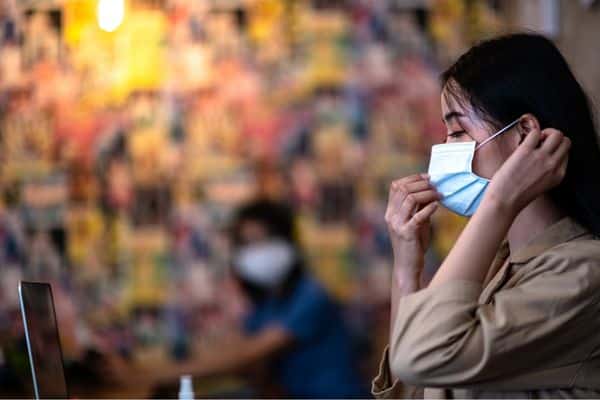Like Canadian Prime Minister Justin Trudeau and Mexican President Andrés Obrador before him, Prime Minister Anthony Albanese has been infected with COVID for a second time.
In the middle of this year’s fourth Omicron wave, Albanese’s reinfection should not come as a surprise. Population antibody surveys have shown roughly half of Australian adults had COVID at least once by mid-2022.
With Christmas parties and much-needed holidays beckoning, how much effort should we be putting in to avoid COVID a second (or third) time?
Studies suggest we should care about this, as each reinfection can increase the risk of poorer health outcomes into the future.
What are the risk factors for reinfection?
The United Kingdom’s COVID Infection Survey recently published an analysis of people testing positive for COVID again between June and October 2022, when the BA.4 and BA.5 Omicron subvariants were circulating widely.
They found reinfection rates were higher in those who had a very mild initial bout of illness and who’d had their second or third vaccine more than 90 days prior (suggesting waning immunity).
Interestingly, they also found reinfection rates were higher 14 days or more following a fourth vaccine dose than they were 14–89 days after a third dose. This is likely related to the qualification for the additional dose being an older and more chronically unwell population, compared with the three-dose regime recommended for a broader (healthier) population.

What are the risk factors for reinfection?
The United Kingdom’s COVID Infection Survey recently published an analysis of people testing positive for COVID again between June and October 2022, when the BA.4 and BA.5 Omicron subvariants were circulating widely.
They found reinfection rates were higher in those who had a very mild initial bout of illness and who’d had their second or third vaccine more than 90 days prior (suggesting waning immunity).
Interestingly, they also found reinfection rates were higher 14 days or more following a fourth vaccine dose than they were 14–89 days after a third dose. This is likely related to the qualification for the additional dose being an older and more chronically unwell population, compared with the three-dose regime recommended for a broader (healthier) population.
What’s more, the risk increased with each new infection. So, those who’d had three infections had worse health outcomes compared with those who’d had COVID twice. And the latter group had worse health than those who’d only been infected once.
The link with worse outcomes was strongest in the first 30 days after their COVID reinfection but was still evident six months later. Many of these persisting ailments, such as fatigue, poor concentration or breathlessness, are consistent with what we call long COVID syndrome.
It is important to note this research, though large and with important findings, is based on a US veteran population that is predominantly male, older (average age 60) and white. This means there will be differences in underlying health conditions and vaccination coverage compared with the wider population.

Bottom line
These studies don’t mean that people feel sicker with the reinfection episode compared with their first – the severity of illness is related to the particular COVID variant, how much virus got into your respiratory tract (“the dose”) and your vaccination status. In many cases, the subsequent infection is “milder” than the initial one.
However, the Nature study does suggest repeated COVID infection can trigger a wide range of health problems down the track through biological pathways that scientists are still trying to unravel. So, getting infected again is best avoided.
Get yourself up-to-date with COVID vaccinations. We know that vaccinations protect against severe COVID illness (needing to be in hospital for oxygen or dying from COVID pneumonia). They also provide some modest protection against COVID reinfection.
With the current wave of infections, be sensible in crowds and public transport and wear a mask. Protect vulnerable contacts, such as the elderly or immunosuppressed, by staying away if you have symptoms.
The end-of-year party and holiday season will bring more invitations to social events and travel. Taking sensible precautions to prevent COVID reinfection will protect our future health.
About the Author: Senior Lecturer at the Australian National University Medical School, Australian National University.
This article first appeared in The Conversation, you can read it here.
Read More: Pregnancy during the pandemic, the ordeals of migrant women




